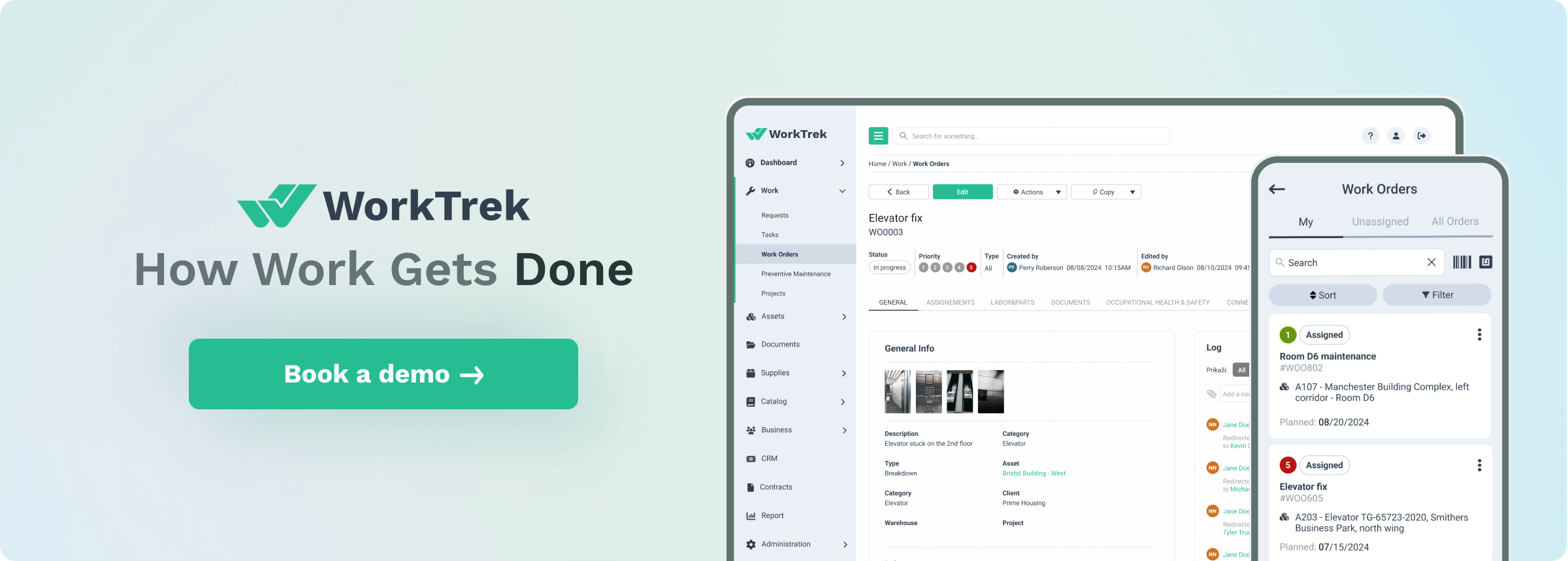What is computer-aided facility management (CAFM)?
Computer-aided facility management (CAFM), also known as computer-aided facilities management, is a software-based system that supports the planning, managing, and optimizing an organization’s physical assets and facilities-related activities.
Facilities management software, such as CAFM, plays a crucial role in automating and optimizing the management of facilities and resources.
It provides a comprehensive digital platform for integrating and managing all aspects of workspace and infrastructure, from space allocation and move management to lease administration and preventive maintenance scheduling.
Definition of Computer-Aided Facility Management
Computer-aided facility Management (CAFM) is a software platform that provides a broad overview of all facility management processes.
It automates many key facilities management functions, allowing users to manage building assets, tools, occupants, and more from one place. CAFM replaces complicated spreadsheets and physical documents, reducing the risk of lost information.
It enables users to easily log, report, and monitor data and oversee the day-to-day running of facilities.
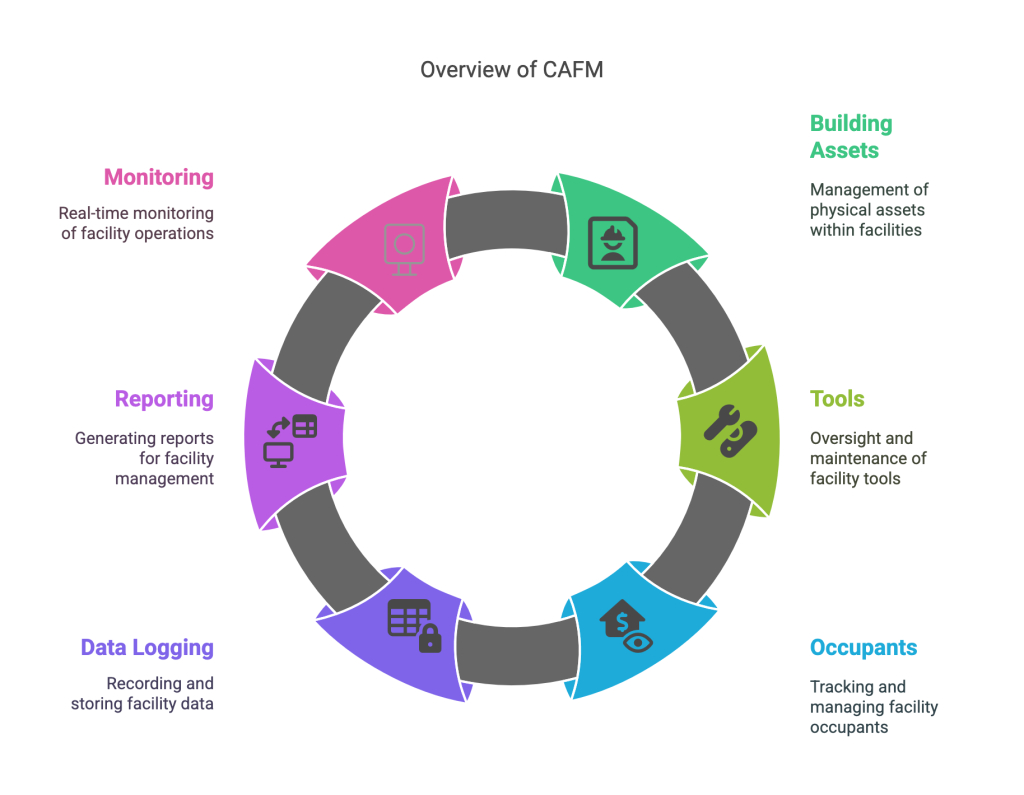
Source: Worktrek.com
The Evolution of Computer-Aided Facility Management (CAFM)
Early Origins (1970s-1980s)
The conceptual foundations of CAFM emerged in the 1970s alongside the broader development of computer-aided design (CAD) technologies. During this period, facility management began coalescing as a distinct professional discipline, breaking away from traditional property management approaches.
The earliest CAFM systems were specialized CAD applications that allowed facility managers to digitize floor plans and building layouts. These primitive systems ran on mainframe computers and required significant technical expertise. They primarily served as digital replacements for paper drawings rather than true management tools.
By the mid-1980s, the introduction of personal computers made it possible to develop more accessible CAFM applications.
Companies like Archibus (founded in 1982) began offering software that combined simple graphical interfaces with basic database capabilities, allowing users to link spatial information with rudimentary asset records for the first time.
Formative Period (1990s)
The 1990s represented a transformative decade for CAFM as several important developments converged:
- Database Integration: CAFM systems began incorporating more sophisticated relational database technology, enabling more complex data relationships and reporting capabilities.
- Industry Standardization: The International Facility Management Association (IFMA) formally recognized CAFM as a distinct technology category and began developing best practices for implementation.
- Client-Server Architecture: Moving away from standalone applications, CAFM evolved toward networked solutions that allowed multiple users to access and update facility information simultaneously.
- Functional Expansion: Systems expanded beyond space management to include maintenance scheduling, lease management, and other operational functions that previously required separate software.
- GIS Integration: Some advanced systems began incorporating Geographic Information System (GIS)capabilities to manage campus-style facilities and infrastructure networks.
Many facility management departments during this era struggled with the significant learning curve these systems presented, and adoption remained primarily limited to larger organizations with dedicated technical resources.
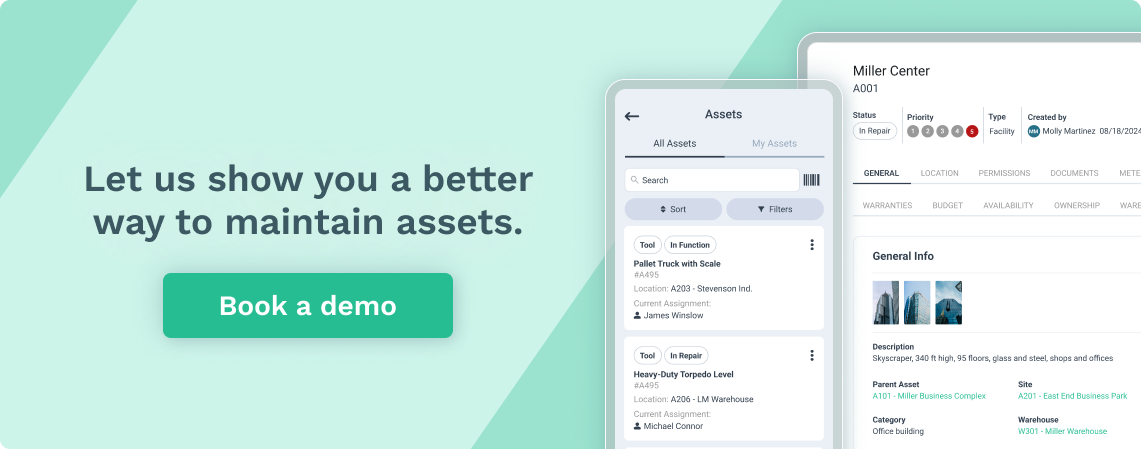
Web-Based Revolution (2000-2010)
The early 2000s brought a paradigm shift in CAFM technology as internet-based applications began replacing client-server architectures:
- Browser-Based Interfaces: Web technologies eliminated the need for specialized client software, dramatically reducing deployment complexity and making systems more accessible to non-technical users.
- Real-Time Collaboration: Online platforms enabled immediate updates and collaboration between facility teams, even across geographical locations.
- Vendor Consolidation: The industry saw significant consolidation as successful CAFM providers acquired complementary technologies, creating more comprehensive platform offerings.
- Mobile Beginnings: The first mobile extensions appeared as limited viewers that later evolved into full-featured applications as smartphone technology advanced.
- BIM Integration: Building Information Modeling (BIM) began making inroads into CAFM, bringing 3D visualization and rich metadata that enhanced facility lifecycle management.
This period also saw the emergence of Software-as-a-Service (SaaS) models, which reduced upfront costs and technical barriers, making sophisticated CAFM capabilities accessible to mid-sized organizations for the first time.
IoT and Data-Driven Transformation (2010-2020)
The integration of Internet of Things (IoT) technologies marked the next evolutionary leap for CAFM systems:
- Sensor Networks: Buildings have become increasingly instrumented with sensors that monitor occupancy, environmental conditions, and equipment status, feeding real-time data into CAFM systems.
- Predictive Analytics: Advanced algorithms began analyzing operational patterns to predict maintenance needs, optimize space usage, and forecast resource requirements.
- Energy Management: CAFM systems incorporated sophisticated energy monitoring and optimization features, supporting sustainability initiatives and cost reduction efforts.
- Cross-Platform Integration: Open APIs and middleware solutions enabled deeper integration between CAFM and other enterprise systems, such as HR, finance, and building automation.
- Augmented Reality: Experimental AR applications emerged, allowing maintenance technicians to visualize building systems and access documentation in the field.
- Workplace Experience Focus: As concepts like activity-based working gained prominence, CAFM systems expanded to include features supporting flexible workspace management and employee experience optimization.
During this period, the distinction between CAFM and Integrated Workplace Management Systems (IWMS) began to blur, with many vendors positioning their products as comprehensive solutions spanning the entire facility lifecycle.
Contemporary Landscape (2020-Present)
Today’s CAFM systems reflect several important contemporary trends:
- Cloud-Native Architecture: Modern systems are built as cloud-native applications from the ground up, offering greater scalability, resilience, and integration capabilities.
- AI-Enhanced Operations: Artificial intelligence and machine learning algorithms power advanced features like anomaly detection, space optimization recommendations, and predictive maintenance.
- Digital Twin Integration: Leading CAFM platforms now support digital twin technology, creating virtual representations of physical facilities that simulate operational scenarios and test optimization strategies.
- Pandemic-Driven Innovation: The COVID-19 pandemic accelerated the development of features supporting hybrid work models, including desk booking systems, occupancy monitoring, and sanitization tracking.
- ESG Compliance: Enhanced reporting capabilities help organizations track and document their progress toward environmental, social, and governance goals related to facility operations.
- User Experience Focus: Interfaces have become increasingly intuitive, with personalized dashboards and workflow automation reducing the learning curve for new users.
The most sophisticated CAFM implementations now serve as nerve centers for intelligent buildings, orchestrating interactions between physical spaces, digital systems, and human occupants in ways that optimize both operational efficiency and user experience.
Historical Significance
The evolution of CAFM reflects broader trends in how organizations value and manage their physical assets. What began as a technical tool for space documentation has evolved into a strategic platform that influences workplace design, operational efficiency, and employee experience.
This transformation parallels the elevation of facility management itself from a tactical support function to a strategic business discipline with a significant impact on organizational performance and sustainability.
As we move forward, the boundaries between traditional CAFM and other technological domains—including smart building systems, workplace experience platforms, and ESG management tools—will likely continue to blur, creating increasingly comprehensive and integrated approaches to the built environment.
Importance of CAFM in Modern Facility Management
CAFM is a pivotal tool for facility management teams or departments. It solves problems related to space planning and tracking assets, coordinates maintenance activities, and performs other facility management tasks.
CAFM provides real-time visibility into facility operations, enabling facility managers to make informed decisions. It also helps streamline facility operations, improve efficiency, and reduce costs. CAFM is a strategic enabler that bridges the gap between operational demands and organizational goals.
Detailed Description
CAFM systems serve as centralized information repositories for facility data, combining spatial information (often through CAD or BIM integration) with operational databases.
CAFM systems are integral to optimizing facility management operations by centralizing data and streamlining various tasks. These systems enable facility managers to:
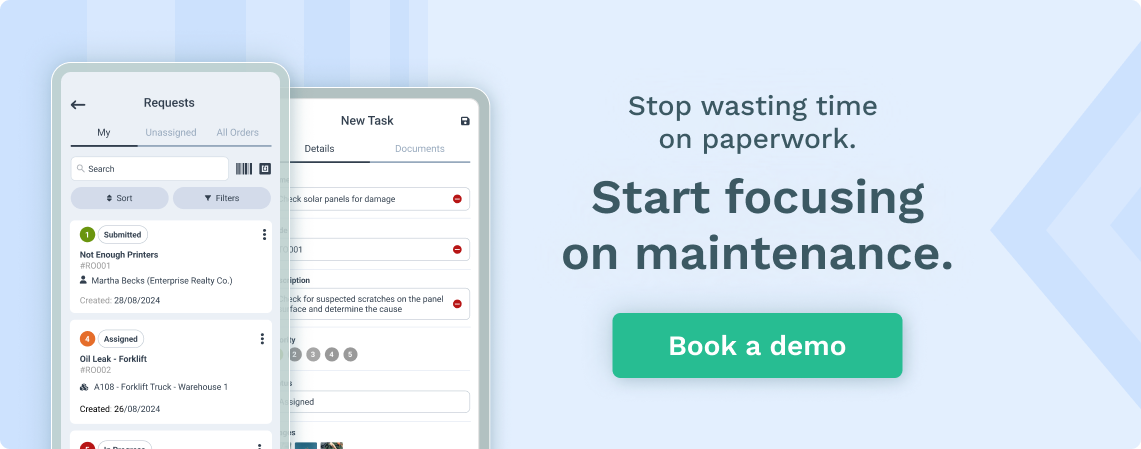
- Visualize and analyze space utilization through interactive floor plans
- Track and allocate physical assets throughout a facility
- Manage workplace services like cleaning, security, and utilities
- Plan and execute moves, additions, and changes to workspace configurations
- Administer property portfolios, including leases and ownership details
- Schedule and monitor planned maintenance activities
- Generate reports on facility performance metrics
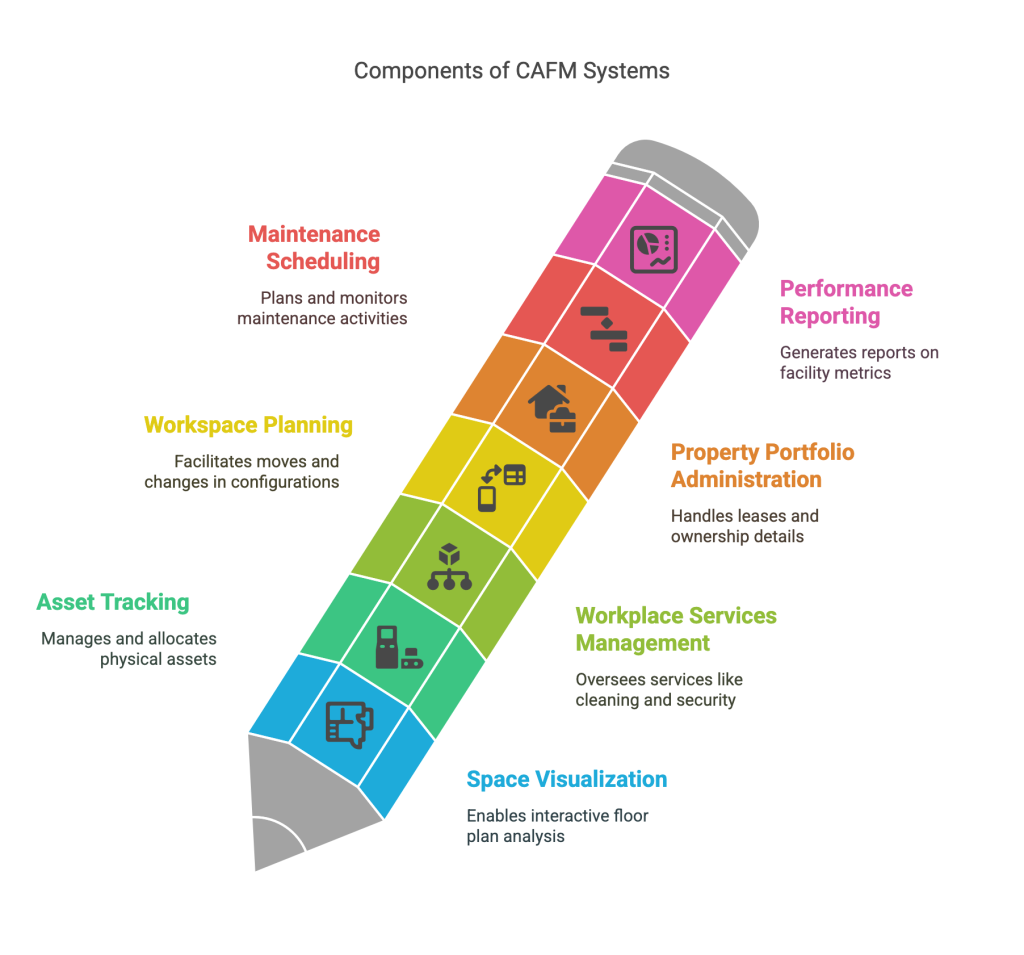
Source: WorkTrek.com
Modern CAFM solutions typically operate as cloud-based platforms with mobile capabilities, allowing facility teams to access critical information and update records from anywhere in the facility using smartphones or tablets.
Overview of CAFM System Components and Functionality
A typical CAFM system consists of several components, including:
- Space management: CAFM systems incorporate CAD (Computer-Aided Design) to create drawings and floor plans. They visualize and analyze space utilization across facilities, enabling smarter planning and allocation.
- Asset management: CAFM software acts as a central hub for assets, compiling important asset information, including specifications, locations, and maintenance history.
- Maintenance management: CAFM systems provide modules with features like scheduling and tracking reactive and preventative maintenance tasks.
- Lease management: CAFM houses and maintains accurate records of lease, rent, and tenure agreements, tracking associated data, such as critical release dates, terms, renewal options, and costs.
- Reporting and analytics: CAFM systems provide real-time reports and analytics, enabling facility managers to track key performance indicators and identify areas for improvement.
Data Collection and Integration
CAFM systems collect and integrate data from various sources, including:
- Asset data: CAFM systems collect data on asset specifications, locations, and maintenance history.
- Space data: CAFM systems collect data on space utilization, occupancy rates, and room bookings.
- Maintenance data: CAFM systems collect data on maintenance activities, including work orders, schedules, and completion rates.
- Lease data: CAFM systems collect data on lease agreements, including critical release dates, terms, renewal options, and costs.
- Energy data: CAFM systems collect data on energy consumption, enabling facility managers to identify areas for improvement and optimize energy usage.
By integrating data from these sources, CAFM systems provide a comprehensive view of facility operations, enabling facility managers to make informed decisions and optimize facility performance.
CAFM vs. CMMS: Key Differences
CAFM (Computer Aided Facility Management) and CMMS (Computerised Maintenance Management System) serve complementary but distinct purposes in facility operations:
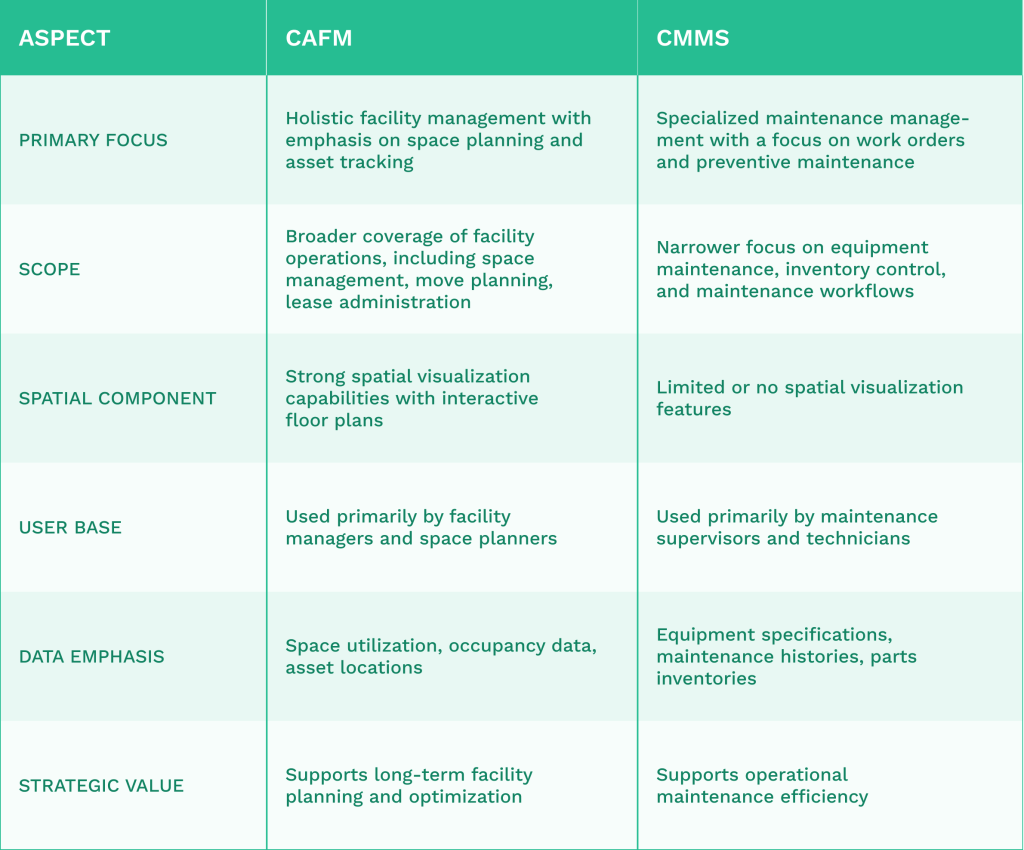
Many organizations implement both systems, with CAFM providing the “big picture” facility view while CMMS handles the detailed maintenance operations.
Top Features of Computer-Aided Facility Management
- Interactive Space Management: Visual floor plans with drag-and-drop capabilities for space planning, occupancy tracking, and utilization analysis.
- Asset Lifecycle Management: Comprehensive tracking of physical assets from acquisition through disposal, including location, condition, and maintenance history.
- Lease and Property Portfolio Management: Tools for managing property contracts, lease terms, renewal dates, and financial obligations.
- Preventive Maintenance Scheduling: Calendar-based scheduling of routine maintenance tasks with automated notification capabilities.
- Move Management: Planning and coordination tools for relocating employees, departments, or equipment with minimal disruption.
- Space Reservation and Hoteling: Systems for employees to reserve workspaces in flexible office environments.
- IoT Integration: Connection with building sensors and systems to monitor space utilization, environmental conditions, and energy consumption in real time.
- Reporting and Analytics: Robust reporting capabilities with customizable dashboards showing key performance indicators and trends.
- Mobile Accessibility: Field access to facility data through mobile applications for on-the-go management and updates.
- Regulatory Compliance Management: Tools for tracking and ensuring compliance with building codes, accessibility requirements, and environmental regulations.
Benefits of CAFM
- Improved Space Utilization: Better allocation and planning typically deliver 10-15% space efficiency improvements. By leveraging data collected through CAFM, organizations can significantly enhance their facility management practices.
- Cost Reduction: Helps identify underutilized spaces and consolidation opportunities, potentially reducing real estate costs.
- Enhanced Productivity: It streamlines processes like move management and work order handling, which traditionally involve multiple departments and paper trails.
- Data-Driven Decision Making: Provides accurate, real-time information about facility operations to support strategic planning.
- Extended Asset Lifespan: Ensures proper maintenance scheduling and tracking, prolonging the useful life of facility assets.
- Better Service Delivery: Automated workflows improve response times for facility service requests.
- Sustainability Support: Helps monitor and manage resource consumption, supporting green building initiatives.
- Improved Compliance: Simplifies documentation and reporting for regulatory requirements.
Drawbacks of CAFM
- Implementation Complexity: Full CAFM systems often require significant time and resources to deploy properly. Integrating CAFM with real estate management functions can also present challenges, particularly regarding data synchronization and system compatibility.
- Data Collection Challenges: The initial population of the system with accurate asset and space data can be labor-intensive.
- Cost Considerations: Enterprise-grade CAFM solutions represent a substantial investment, including software, training, and ongoing support.
- User Adoption Hurdles: Staff may resist transitioning from familiar paper-based or simple digital systems to comprehensive CAFM platforms.
- Integration Limitations: Some older building systems may not easily connect with modern CAFM software.
- Ongoing Maintenance Requirements: CAFM systems need regular updates to remain accurate as facilities change.
- Potential Feature Overload: Organizations may pay for sophisticated features they don’t fully utilize.
- Dependency Risks: As operations become more dependent on the CAFM system, technical issues can have broader operational impacts.
CAFM continues to evolve with emerging technologies like artificial intelligence for predictive analytics, augmented reality for visualization, and deeper integration with building automation systems—transforming from simple record-keeping tools to comprehensive platforms for strategic facility management.
Get a Free WorkTrek Demo
Let's show you how WorkTrek can help you optimize your maintenance operation.
Try for free



